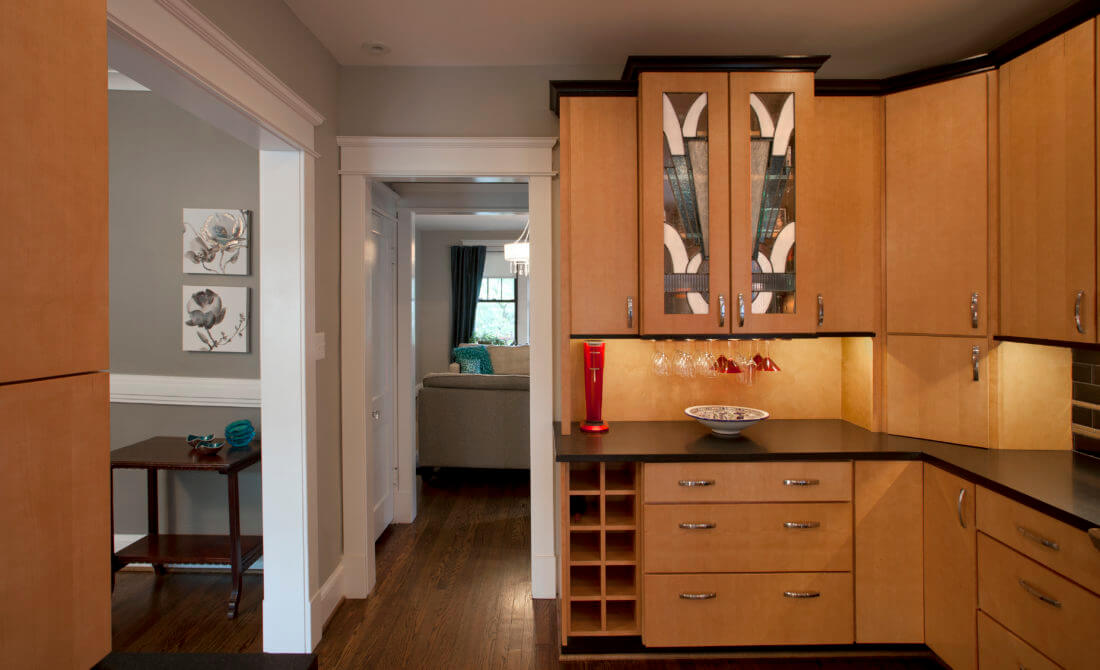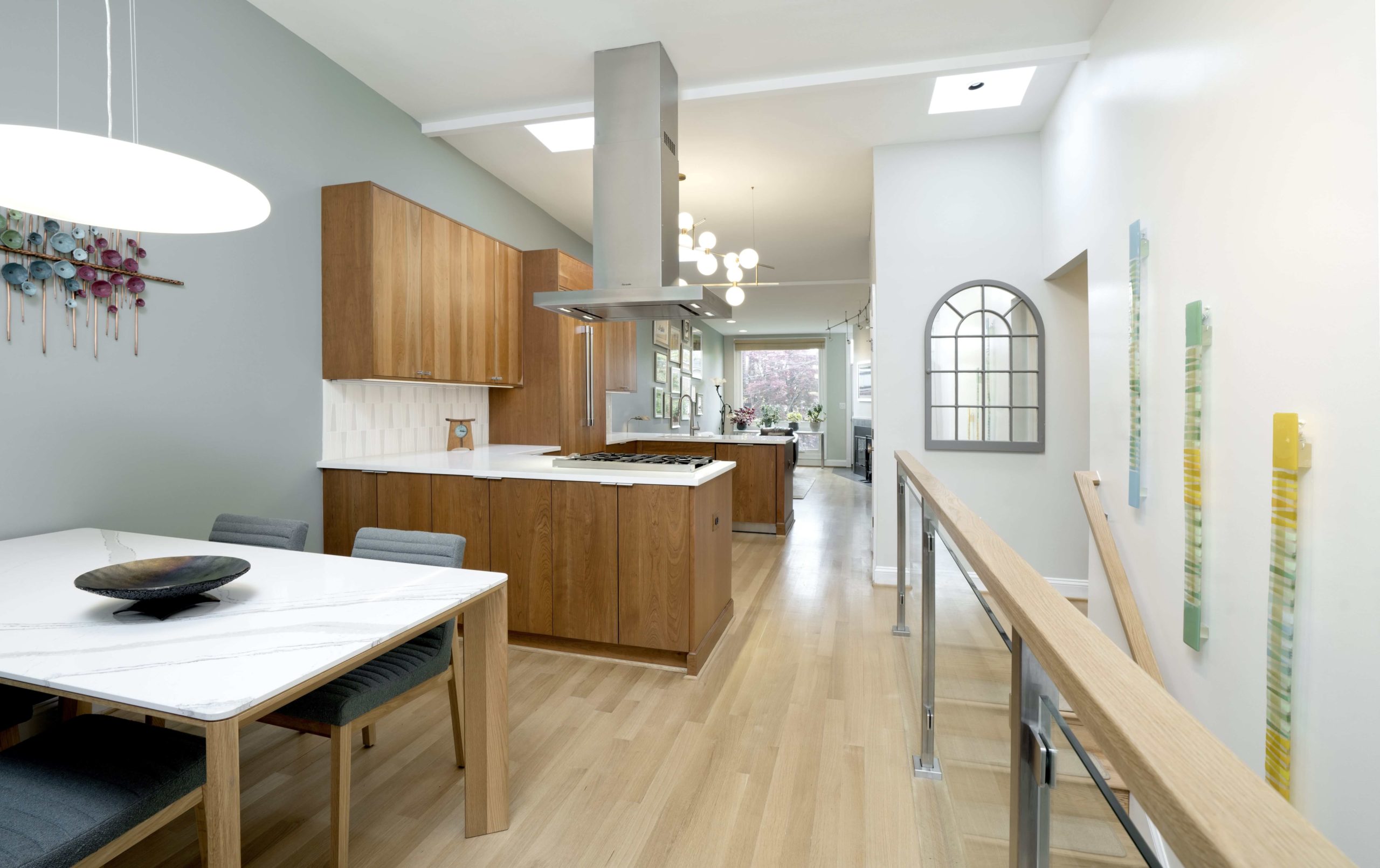An important element of your kitchen renovation to consider is your lighting. This is especially true for D.C. homeowners who, more than likely, have a small kitchen.
Enhancing your kitchen’s look with proper lighting can make your kitchen not only stand out, but it can also make space appear bigger. When talking with D.C. homeowners and their lighting, there are four main types of lighting to consider with their kitchen renovation.
Natural kitchen lighting

This is the light that comes in through the windows or a skylight in your kitchen. The more natural light you can bring in the better, not just for the appearance of your kitchen, but also to help brighten up the mood and ambiance inside your kitchen when the sun is radiant.
General kitchen lighting

This is the artificial light that you will need in the kitchen when it is night time or for those cloudy days outside. You can still get the proper general lighting to walk safely through the kitchen, and be able to illuminate what you are doing. Types of general lighting will be recessed lighting on the ceiling, or other surface mount types of lights, such as track lighting or decorative fixtures mounted to the ceiling.
A popular layer of lighting designers recommend is ambient lighting. With ambient lighting, your kitchen will have a soft, warm glow. This also gives you a welcoming aura in your kitchen and can soften shadows.
Task kitchen lighting

This kind of light is most common with your under cabinet lighting, and it is important because it illuminates your work area so that when you are prepping food, or you’re cooking, you can clearly see the countertop area.
Accent kitchen lighting

This type of lighting is used to illuminate certain features in the kitchen, such as light that is placed above the crown molding over the wall cabinets to bring to life the ceiling. Accent kitchen lighting adds a little extra dimension to your kitchen space, and this layer of light is best with glass cabinets and kitchen collections to display, such as your fine Chinas and glassware.
Of course, when choosing the proper lighting for your kitchen renovation, it is imperative that you consider the style and color schemes of your kitchen. For instance, if your kitchen already has light paint or color, you can use lights with lower wattage to avoid having your kitchen appear too bright. Also, regarding natural lighting, you really can’t go wrong here. Not only do you bring in more welcoming light, but you also cut down on energy costs.
When choosing the right bulb(s) for your different types of non-natural lighting in your kitchen, consider its purpose. There many different types of bulbs and their light spreads differently. There are also many different types of bulb shapes to consider to help make your kitchen stand out. Again, working with a good kitchen designer in D.C. will help you in choosing the best lighting, fixtures, and bulbs to go with.
Need a dimmer for your kitchen lighting?

Dimmers are becoming popular within D.C. kitchen redesigns. Dimmers are good to have for your task lighting as you can scale up or down your lighting for the task you are working on. Dimmers can also be good to provide a little extra ambiance to your kitchen.
Beware the “glare bomb”

The “glare bomb” is a common kitchen lighting mistake that can make your D.C. kitchen look dreadful. Some homeowners want to light the whole room with a single and powerful fixture mounted to the ceiling. This is a big no-no, and any reputable D.C. kitchen remodeler will tell you that going this route will be overpowering and will cause a glare effect in your kitchen.
Having the right type of lighting can make or break your kitchen. If you are a homeowner in Washington, D.C. and you are going through a kitchen renovation, then it is best to consider going with a trusted D.C. kitchen design and build firm that will walk you through each element of your kitchen lighting to ensure you have a beautifully lit design that you can enjoy each day.
We hope you found these tips helpful. If you reside in Washington, D.C. and you are in the market for a kitchen renovation, then reach out to us for a free design quote.
Finesse Design Remodeling is an award-winning full-service design-build firm specializing in fine renovations and restorations in the Washington DC Area.
You can also become a member of our awesome community below of D.C. homeowners who receive weekly tips and insights straight to your email inbox:







